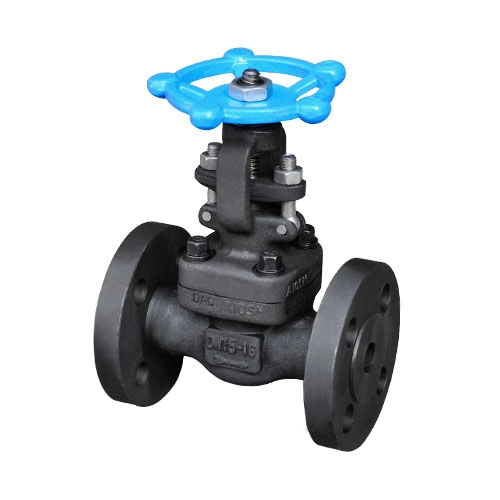How Material Choices Influence the Price of a Gate Valve

Introduction to Gate Valves
A. What Is a Gate Valve?
A gate valve is a kind of device that controls the flow of liquid or gas in a piping setup. It works by lifting or dropping a gate—often shaped like a wedge—into the stream’s path. These valves are made for turning the flow on or off, not for adjusting it. They cause very little pressure loss when fully open. It’s widely used in homes, businesses, and factories where exact flow control is needed.
B. Importance of Material Selection in Valve Performance
Choosing the proper material is crucial to a gate valve’s economy, durability, and efficiency. Various materials handle corrosion, pressure, and temperature differently. The correct one can be chosen that will make the valve perform optimally and endure longer. This reduces maintenance expenses and operational interruptions. Factors such as the environment, the fluid type, and financial constraints need consideration when determining the material.
Common Materials Used in Gate Valves
A. Stainless Steel (SS304/SS316)
Corrosion Resistance and Durability
Stainless steel, particularly SS304 and SS316 grades, is highly valued because of its excellent resistance to rust and long – standing strength. SS316 has better resistance to chloride – induced corrosion than SS304. Therefore, it is suitable for tough environments. For example, salt water or aggressive chemicals. These characteristics enable stainless steel valves to deal with harsh conditions. And they don’t lose their effectiveness.
Cost Implications for High-Grade Alloys
Stainless steel offers superb durability and dependability. However, top-tier alloys like SS316 cost more. They suit critical uses where lasting performance pays off the price. For milder conditions, SS304 is a cheaper option that still performs strongly.
B. Brass
Affordability and Machinability
Brass is a go-to pick for gate valves because it’s budget-friendly and easy to shape. It conducts heat well and resists wear. This makes it good for medium-pressure tasks like plumbing or HVAC systems.
Limitations in High-Pressure Environments
Brass has its perks, but it struggles in high-pressure or hot settings. Over time, it can suffer from dezincification—a process that weakens it. This makes it less ideal for heavy-duty industrial jobs needing extreme toughness.
C. PVC and Plastic Composites
Lightweight and Low-Cost Solutions
PVC (polyvinyl chloride) and other plastic blends are light and affordable choices for less demanding uses. They resist chemicals well. This makes them great for handling safe fluids like drinking water or sewage.
Suitability for Non-Corrosive Applications
Plastic valves can’t handle high pressure or heat due to their weaker build. Still, they shine in homes or light business settings. Here, saving money and easy setup matter most.
D. Carbon Steel
Strength and Industrial Applications
Carbon steel is known for its power and ability to manage high-pressure systems. It’s a top choice for industrial uses like oil refineries or power stations. Its sturdy build ensures steady work in tough conditions.
Maintenance Costs and Rust Prevention
Carbon steel is strong, but it rusts if not cared for or coated properly. Regular upkeep is a must to avoid rust-related breakdowns. This can raise running costs over time.
Comparative Cost Analysis by Material
A. Stainless Steel vs. Brass
Initial Purchase Price Differences
When looking at stainless steel and brass for gate valves, the starting price matters a lot. Stainless steel, especially high-end types like SS316, costs more upfront. That’s due to its top-notch rust resistance and strength. It’s perfect for harsh industries like chemical plants or sea-based work. Brass, though, is cheaper and common in home plumbing or HVAC setups where super durability isn’t the main focus.
Long-Term Value in Industrial Settings
Stainless steel’s upfront cost is higher, but its lasting benefits often make it worth it in factories. It fights off rust and handles big pressures, needing little upkeep and lasting longer. Brass valves are cheaper at first, but they may need replacing or fixing more often due to wear or dezincification in tough spots. For key tasks where stopping work costs a lot, stainless steel proves more reliable and budget-smart over time.
B. PVC vs. Carbon Steel
Budget-Friendly vs. Heavy-Duty Applications
PVC gate valves are wallet-friendly and simple to install. These light options work well for easy jobs with safe fluids like drinking water or waste systems. But they lack the power for heavy tasks. Carbon steel shines in high-pressure places like oil refineries or power plants. Its tough build handles extreme heat and force.
Impact of Temperature and Pressure Ratings
PVC valves have much lower heat and pressure limits than carbon steel ones. PVC weakens when it gets hot, so it’s no good for steam or hot liquids in industry. Carbon steel holds strong in intense situations. Yet, it needs regular care to stop rust. Adding protective layers can boost its life and keep it working well in hard conditions.
Why Miwival’s Gate Valves Are a Reliable Choice

Miwival’s Commitment to Quality Materials
Miwival’s gate valves are built with top-notch materials to meet all kinds of needs across industries. They offer choices like stainless steel, brass, PVC, and carbon steel. This lets buyers pick what fits their specific job best. Using high-quality alloys like SS316 shows Miwival’s focus on tough, rust-proof products. These materials go through strict checks to meet standards and perform reliably.
Balancing Performance, Durability, and Price with Miwival
Miwival finds a great mix of performance, strength, and cost by using smart manufacturing and quality supplies. Their stainless steel valves give unmatched dependability for vital tasks. Meanwhile, brass options offer affordable fixes for home use without skimping on function. For projects needing light, cheap parts, Miwival’s PVC valves bring solid chemical resistance at a low price. Their carbon steel valves tackle big industrial jobs with great power and toughness in extreme settings.
By focusing on happy customers through smart design and top materials, Miwival has become a trusted name for gate valves in many fields. You can contact Miwival for the price if you have any needs.
FAQ
Q: What materials are commonly used for gate valves, and how do their prices compare?
A: Carbon steel (WCB): Typically ranges from 20–20–150, depending on manufacturing standards.
Stainless steel (304/316): Costs 50–80% more than carbon steel (e.g., 80–80–300+) due to corrosion resistance and durability.
Brass/copper alloys: Mid-range pricing (e.g., 50–50–200), often used for low-pressure applications.
Specialized alloys (e.g., titanium, duplex steel): Premium prices (500–500–2,500+) for extreme temperature or corrosive environments.
Q: Why do stainless steel valves cost significantly more than carbon steel?
A: Stainless steel requires advanced machining and corrosion-resistant treatments, increasing production costs by 30–50%. Additionally, raw material costs for SS 304/316 are 2–3x higher than carbon steel.





